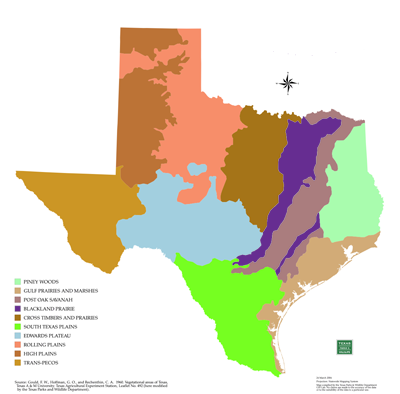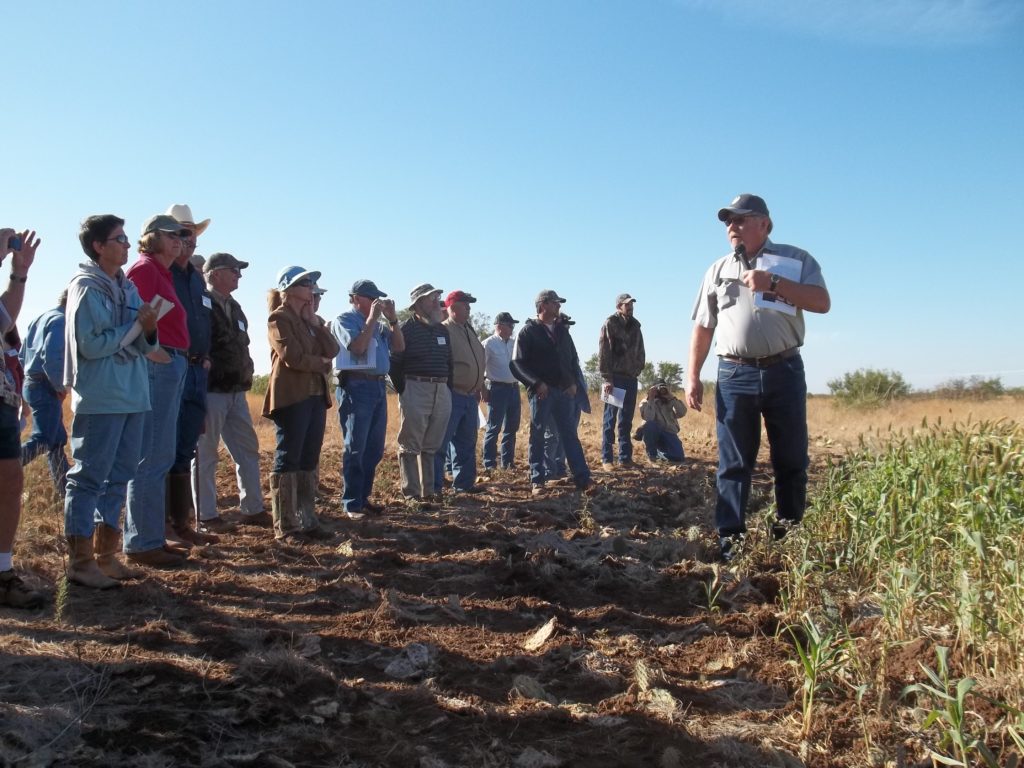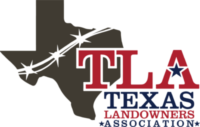
Bobwhite Quail in Texas
Reversing the Plight of the Northern Bobwhite in Texas
By: Mark Tyson, M.S. and Kristen Tyson, M.A.
With a number of different ecoregions, it is only fitting that Texas has a diversity of quail species. Texas is home to four species of quail, an accolade only three other states can claim.

Northern bobwhites occupy much of the state, but they are uncommon in the state’s western third. These arid lands are home to the scaled or “blue” quail, the Montezuma quail and the Gambel’s quail.
Although management techniques vary among the quail species, the bulk of quail-focused management and research in Texas is directed towards the northern bobwhite. Even projects like the Reversing the Decline of Quail Initiative (RQDI) are concentrating their efforts on bobwhite quail.
Northern bobwhites are the most well-known and studied of the state’s quail species, yet their populations have experienced sharp declines over the last thirty years.
Quail Decline
Data from Texas Parks and Wildlife roadside surveys indicate a 68% decrease in the mean amount of bobwhites observed between 1978 and 2013. Habitat loss and land fragmentation have been cited as two of the primary factors in bobwhite population declines (Hernandez and Peterson 2007).

Additionally, a myriad of known and unknown factors can contribute to decreasing populations. Known factors include brush encroachment, excessive livestock grazing, clean farming practices, predation, and drought conditions. Unknown factors such as parasites and diseases may also influence declines, yet their true impact on population decline is not well understood.
The implications of declining bobwhite populations reach far beyond the birds themselves. Entire grassland ecosystems are in trouble; bobwhites serve as an indicator species for a variety of grassland inhabitants, thus when bobwhites suffer, so too do many other species.
One example is the black-capped vireo which is an endangered bird that occupied much of central Texas. Black-capped vireos have been impacted by a reduction in low growing woody cover and brush encroachment. While it may appear that quail-focused management is quail specific, in actuality a multitude of species reap the benefits. The livestock and brush management practices suggested for quail will also result in positive habitat changes for species such as the vireos and many others.
It is said that starting a new endeavor is the hardest part of making a change. Where exactly do you begin once the decision has been made to manage for quail?
Actually, that is not a hard question to answer thanks to the Texas Quail Index (TQI), an effort piloted by the Texas A&M AgriLife Extension Service. The TQI is designed to educate land managers, hunters and the general public about the population dynamics, habitat requirements and other factors affecting bobwhites in Texas. Currently, there are 35 counties and 7 Wildlife Management Areas involved in the project.

TQI unites local County Extension Agents (CEA) with land managers and interested community members who work together to implement a variety of quail assessment techniques at a local ranch. These techniques assess quail abundance, predator abundance and habitat quality. This type of one-on-one dialogue between local CEAs and community members offers hands-on experience that they can then conduct on their respective properties.
Along with the TQI, RQDI has paved the way for research into the reduced numbers of quail. This collaboration between Texas A&M AgriLife Extension and the Texas Parks and Wildlife Department seeks to understand, address, and reverse the critical quail decline in Texas. Since its inception in September, 2013, RQDI has funded 13 projects at several universities in Texas.
In addition to research, this effort includes support of programs like Quail Masters, Quail Appreciation Days and youth camps like Bobwhite Brigades. More information on the RQDI can be found online HERE.
Additionally, two new Smartphone apps will soon be released to further help landowners/managers support a healthy quail habitat: Northern Bobwhite Habitat Evaluation and Northern Bobwhite Management Calendar.
The saying, “Anyone can count the seeds in an apple, but no one can count the apples in a seed”, represents the potential for the ongoing bobwhite restoration efforts which are vital to bobwhites and a host of grassland species. Actions taken today have the ability to produce an untold number of positive outcomes for Texans to enjoy well into the next century.
